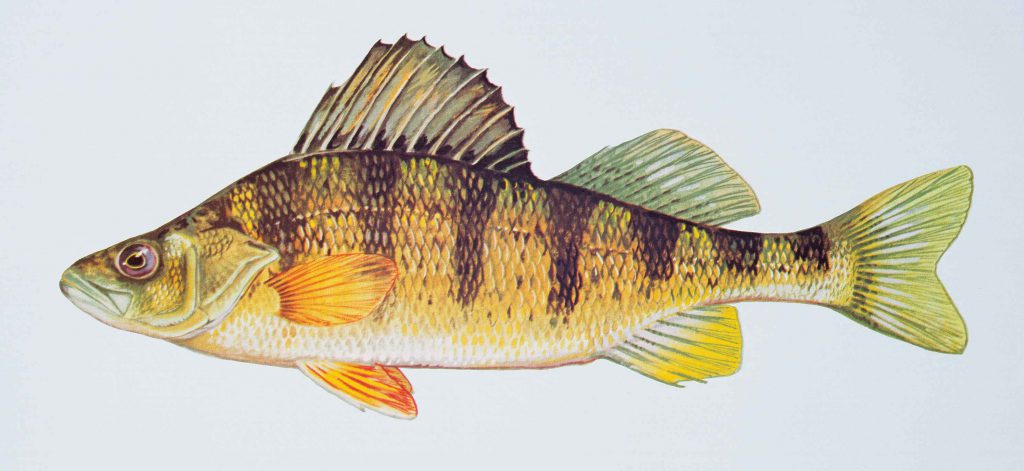Save the Yellow Perch!
Perch count way down in Lake Michigan. Strong leadership needed to protect state waters.
It is a perpetual puzzlement that the major conservation issues facing Wisconsin seldom animate leaders of our political parties.
The latest to draw a lack of response from either party is development of “a yellow perch desert” in Lake Michigan. Paul Smith, the Journal Sentinel outdoors writer, reported that the perch count in a 2018 sample netting was only 8 compared to 14,474 in 1997. Other measures showed similar alarming results.
The dramatic falloff of the species occurred despite a 1996 ban on commercial perch fishing.
The villains in this story are the Quagga and Zebra mussels brought into the Great Lakes in the ballasts of ocean-going ships entering through the St. Lawrence Seaway, the Corps of Engineers and politicians who made the gigantic mistake of building the Seaway, which opened in 1959, and the politicians who refuse to shut it down despite its minimal impact on transportation costs. They messed with Mother Nature.
The perch species was arguably the most valuable of the 139 species of in the five Great Lakes, in both economic and cultural terms. How many families, like mine, had a tradition teaching the kids and grand kids how to catch and clean a bucket of perch and then fry them up for an excellent family meal? It’s an uncountable number over generations.
The yellow perch disaster – that’s not too strong a word – is just one of the major challenges facing the Great Lakes that have been inadequately addressed by our political leaders, including:
- The likely invasion by Asian carp coming up the Chicago Sanitation and Shipping Canal, which would be another fishing disaster.
- The oxygen dead zone in the heart of Green Bay.
- Phosphorous run-off that is causing green algae blooms that threaten drinking water.
There are some solutions to these threats, such as closing the Chicago Canal to shipping. Like the seaway, its economic benefits are minimal compared to the massive cost to the fisheries and to the recreation industry.
Electronic shock and sound devices are one stopgap for carp working upstream in the Chicago and Calumet river systems. But Congress hasn’t fully funded the controls, despite the recent plea of Midwest mayors to do so.
But it will take foresight from the Legislature to find a way to keep the Stewardship Fund going at previous levels.
An example of the kind of leadership we need to tackle the Great Lakes’ issues went public last week of with a proposal by UW–Milwaukee to create the Freshwater Collaborative of Wisconsin. Led by UWM and its College of Freshwater Sciences, the collaborative will pull together faculty members from the 26 UW campuses to go after the “grand water challenges.”
The governor and legislators have a role to play since the collaborative will require $27.6 million in state funding over the next six years, including $10.7 million in startup funding over the first two years.
That amount is a no-brainer in light of the economic havoc that is facing the lakes. The near-extinction of the yellow perch resource is just the latest hit.
A first project for the collaborative should be an attack on the 750 trillion – with a “T” – Quagga mussels that blanket the bed of the five lakes. They have stolen the plankton young perch rely on for survival.
Some small-scale antidotes have been discovered. Stocking of perch is one idea. The scientists across the UW campuses need to find a large-scale solution.
They will be well-funded heroes if they do.
John Torinus is the chairman of Serigraph Inc. and a former Milwaukee Sentinel business editor who blogs regularly at johntorinus.com.
Op-Ed
-
Unlocking Milwaukee’s Potential Through Smart Zoning Reform
 Jul 5th, 2024 by Ariam Kesete
Jul 5th, 2024 by Ariam Kesete
-
We Energies’ Natural Gas Plans Are A Mistake
 Jun 28th, 2024 by John Imes
Jun 28th, 2024 by John Imes
-
Milwaukee Needs New Kind of School Board
 Jun 26th, 2024 by Jordan Morales
Jun 26th, 2024 by Jordan Morales





















In Life and Death of the Great Lakes, Dan Egan makes note of the interventions that need to be made because of human intervention and notes also the rapid evolution of fish jaws to begin to chew away at the mussels. Can technology save us, save the great lakes, or do we need to observe a bit more to see where we need to step aside.
I do not think we can “step aside” now. I think that we need to close both the St. L. Seaway and the Chicago Ship Canal as soon as possible – before The Great Lakes become attractive repositories of garbage..
Fish jaws may have begun to “chew away at mussels” in the great lakes, but the mussels are so prominent in the lakes now that they would have to chew away for an eternity to make a difference.